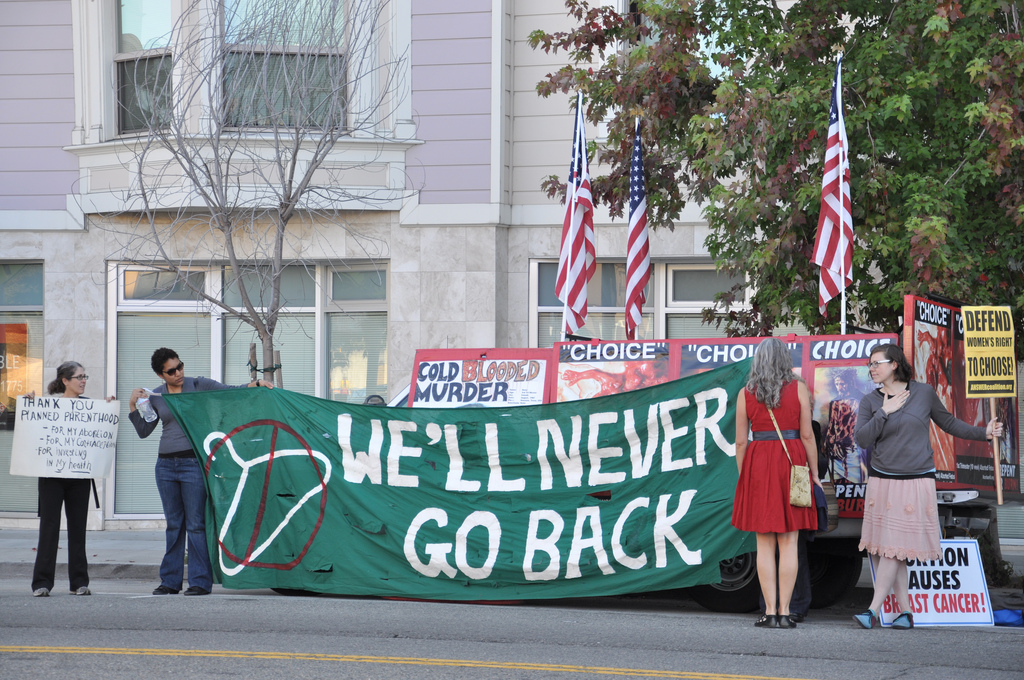The Supreme Court ruled in a unanimous decision Thursday that a 14-year-old Massachusetts “buffer zone” law was unconstitutional. The case, McCullen v. Coakley, dealt with the issue of whether local governments can create safety buffer zones around reproductive health clinics to ensure that patients, doctors, and healthcare workers can enter these facilities without harassment, intimidation, or violence. The Supreme Court’s decision, unfortunately, ignored the very real threats against the safety of those providing comprehensive reproductive health services that occur everyday.

The Massachusetts law in question created a 35-foot “buffer zone” in front of the state’s abortion clinics, meaning that no one was allowed to approach or harass potential patients and staff members within 35 feet of a clinic. Ultimately, the Supreme Court ruled that the practice was unconstitutional, focusing on the fact that the buffer zone law applied to sidewalks and public walkways. According to the court, public walkways have “traditionally been open for speech activities,” and thus infringing on someone’s right to debate someone else on the sidewalk becomes an infringement on their first amendment right to free speech. But in reality, public walkways aren’t being used by anti-choice extremists for speech – they are being used as spaces for intimidation, violence, and terror.
To understand McCullen, it’s necessary to go back a few decades. In 1994, an anti-abortion extremist named John Salvi murdered two receptionists, Shannon Lowney, 25, and Lee Ann Nichols, 38, at two separate abortion clinics in Brookline, Massachusetts. Five other people were wounded in the attacks. Six years later, the Massachusetts state legislature enacted a six foot clinic safety buffer zone law in response to repeated incidents of clinic violence and intimidation. This “buffer zone” law was designed to ensure that those giving and seeking reproductive health care could safely enter medical facilities without being subject to harassment or intimidation. Local law enforcement made clear that having a better-defined buffer zone would promote public safety. But in 2007, after anti-abortion demonstrators continued to crowd clinic entrances, block cars from entering driveways, and intimidate patients, doctors, and healthcare workers, the Massachusetts state legislature strengthened its law, creating a 35-foot safety buffer zone.
Anti-abortion activists challenged the 2007 law, claiming that it infringed on their First Amendment right to free speech. The Court’s opinion in McCullen concluded that the buffer zone law was “designed to address clashes between abortion opponents and advocates of abortion rights,” and that protesters should have the right to “converse with their fellow citizens about an important subject on the public streets and sidewalks.”
Portraying buffer zone laws as a response to “clashes” of political opinion overlooks the harrowing history behind McCullen and the much larger trend of violence against abortion providers and patients that it represents. The 1994 murders that spawned the Massachusetts buffer zone law were not isolated incidents, and the violence against clinics would continue in years to come and persists today: In Pensacola, Florida, Dr. David Gunn was shot and killed while entering his clinic. Dr. George Tiller was shot and killed in as he was leaving his clinic in Kansas. Dr. John Bayard Britton and a volunteer clinic escort Lt. Col. James Barrett were murdered in Pensacola in the driveway of their clinic. Dr. C. Jackson was stabbed 15 times outside his clinic in New Orleans. Bombs have exploded at clinics in Atlanta and Birmingham.
According to the Feminist Majority’s National Clinic Access Project’s 2010 survey, clinic violence has been increasing over time. In 2010, nearly one in four clinics in the United States was targeted with severe anti-abortion violence. And over half of all clinicsexperienced anti-abortion intimidation tactics such as blocking cars of patients, recording license plate numbers, filing frivolous lawsuits, leaving harassing phone calls and emails, distributing pamphlets and leaflets targeting staff and physicians, and posting personal information or pictures of patients and staff on the internet. This extremist interference in reproductive health services has serious health consequences. First and foremost, when anti-abortion protestors make working at an abortion clinic dangerous, this limits the number of doctors and clinics offering abortions. For patients who do make it inside a clinic, extremist activities take a severe toll on their health. One Florida clinic doctor testified that as a result of passing a gauntlet of protest and harassment to enter the clinic, patients “manifested a higher level of anxiety and hypertension,” increasing the risks associated with a surgical procedure.
The freedom to coerce women out of having abortions should not override the safety of those women. As the Supreme Court has previously stated, “the First Amendment does not demand that patients at a medical facility undertake Herculean efforts to escape the cacophony of political protests.” And the Court appears to recognize that protests outside of one’s place of employment can be disruptive and threatening – after all, the Supreme Court employs a 252-foot buffer zone on its own plaza. It is puzzling, then, that the Supreme Court has a problem with a state protecting healthcare providers from political demonstrations and violence at their place of work.
The impact of the Supreme Court’s decision in McCullen on clinic violence and harassment remains to be seen. However, one thing that is clear is that we need to work harder to protect safe and legal access to abortion.
The Feminist Majority Foundation’s National Clinic Access Project works to protect clinics, abortion providers, and the women who rely on them. That work is crucial – especially in the wake of nonstop legislative attacks on abortion access nationwide and the Supreme Court’s recent blow to patient safety in McCullen. Take action to sustain NCAP today.

